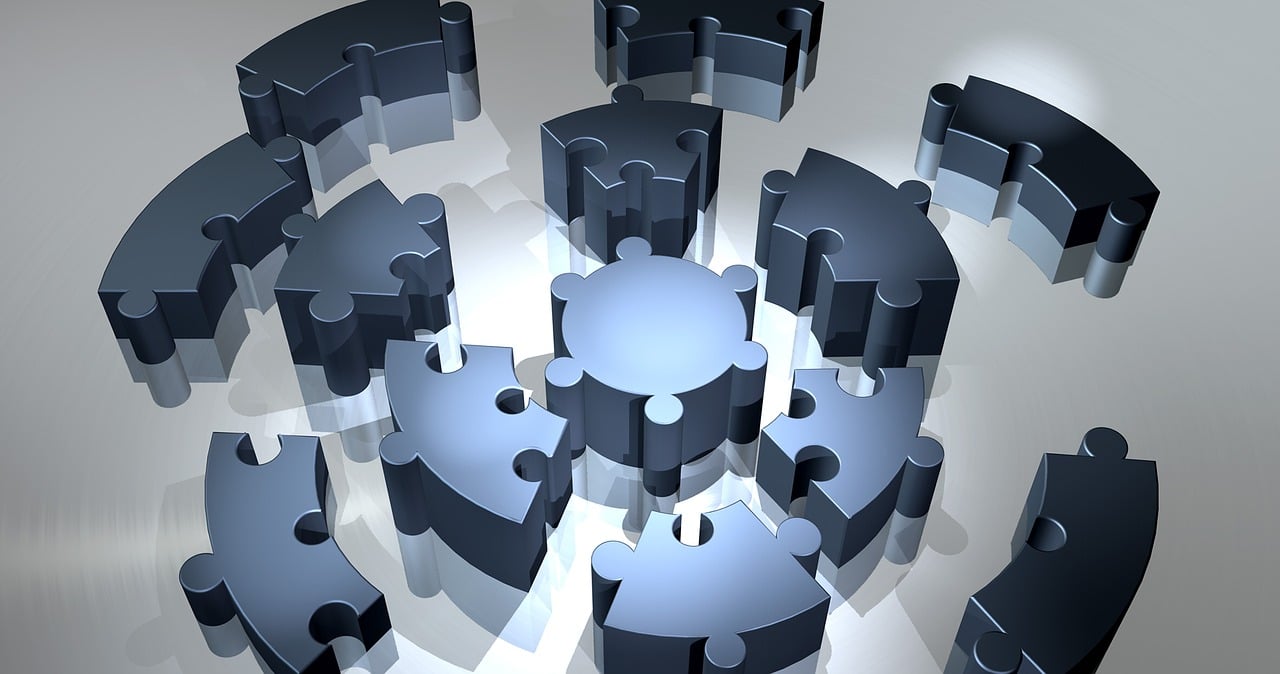In today’s rapid-paced professional world, the challenge isn’t just the sheer volume of tasks but discerning which ones truly deserve immediate attention when everything seems equally important. Endless emails, back-to-back meetings, and urgent deadlines can leave even the most organized individuals feeling overwhelmed and reactive rather than proactive. Without an effective system to prioritize, days slip away with little meaningful progress, leading to stress and burnout.
Prioritizing isn’t about simply selecting the tasks that scream the loudest. It’s about recognizing the difference between urgency and true impact. This distinction helps focus energies on work that drives results rather than just keeps you busy. From visual frameworks like Kanban boards to scoring models such as RICE, and mindset shifts like the “Eat the Frog” technique, there are numerous methods tailored to diverse workflows, personalities, and industries.
Choosing the right system, however, depends on your specific context—whether you’re managing a project team using Asana or Wrike, juggling daily responsibilities with Todoist or Microsoft To Do, or coordinating complex schedules on Monday.com or ClickUp. Additionally, integrating these techniques with tools that automate prioritization can dramatically enhance your productivity, clearing the fog of what’s urgent versus what’s important.
As we explore multiple effective strategies and their practical applications, including how to avoid common pitfalls and leverage cutting-edge scheduling platforms, you will gain a clearer perspective on transforming overwhelming task lists into actionable, focused plans. The secret to sustained productivity lies not in doing more but in strategically doing what truly matters.
Understanding Why Prioritization Feels Impossible When Everything Seems Important
Many professionals face the paralyzing issue where all tasks appear to be pressing, making prioritization feel like an unsolvable puzzle. This sensation often arises because of a blurred line between urgency and importance alongside external distractions that disrupt focus.
To begin with, labeling every task as urgent dilutes your attention. The flood of notifications, emails, and instant requests often push you into reactive mode, responding to the latest stimulus rather than strategically choosing tasks that drive your projects forward. For example, an unplanned email demanding immediate input might take precedence over drafting a key strategy document, despite the latter contributing more to long-term goals.
Another factor is the underestimation of time. Tasks thought to be quick “fixes” balloon into hours, unexpectedly invading your schedule and shunting planned priorities. This misjudgment cascades into a backlog, increasing stress and forcing rushed, lower-quality work.
Disruptions compound these issues. Calls, notifications, and sudden meetings break your workflow, increasing cognitive load and lowering efficiency. Without a clear process to filter and rank your commitments, you’re left juggling multiple balls without real progress.
Finally, lacking a structured prioritization system causes inconsistent decision-making. You might alternate between sorting tasks by deadlines on one day, importance the next, then by ease—all without a coherent framework. This inconsistency fuels overwhelm rather than relief.
Implementing a clear prioritization method can fix this by providing guidelines to categorize, rank, and schedule tasks effectively based on their impact and urgency. Not only does this reduce decision fatigue, but it grounds your workday with predictable rhythms and milestones.
| Common Prioritization Challenges | Impact on Productivity | How a System Helps |
|---|---|---|
| Treating all tasks as urgent | Scattered focus; stress overload | Clarifies real urgency vs. noise |
| Underestimating task duration | Schedule disruption; backlog | Improves realistic planning |
| Frequent interruptions | Decreased flow; mental fatigue | Strengthens focus via dedicated blocks |
| Lack of consistent method | Confusion; ineffective prioritization | Creates predictable work routines |
- Recognize urgency vs importance to regain control.
- Set realistic time expectations on tasks.
- Establish protected focus periods in your calendar.
- Use a consistent prioritization framework daily.

Mastering Task Prioritization: Top Systems to Use When Everything Feels Crucial
When every task screams “urgent,” knowing which to tackle first can be exhausting. Fortunately, there are multiple proven prioritization methods, each offering unique benefits suited to different work styles and environments.
1. The Priority Matrix (Eisenhower Matrix)
This classic approach sorts tasks into four quadrants based on their urgency and importance:
- Do Now – Urgent and important tasks needing immediate completion.
- Schedule – Important but less urgent tasks planned for later.
- Delegate – Urgent but less important tasks assigned to others.
- Eliminate – Tasks neither urgent nor important, discarded.
By visually categorizing to-dos, this method helps clear mental clutter and focus on real priorities. It’s especially useful if you’re using digital tools like Todoist or Trello, which support tagging and board views for easy sorting.
2. MoSCoW Method
Short for Must-have, Should-have, Could-have, and Won’t-have, this system provides structured prioritization particularly useful in project management and team environments. It dictates essential tasks (Must-have) versus those that can be delayed or dropped (Won’t-have).
Platforms like Asana and Monday.com often feature templates to implement MoSCoW with shared transparency within teams.
3. RICE Scoring Model
RICE stands for Reach, Impact, Confidence, and Effort; it’s a numerical system for objectively prioritizing tasks and projects. Each criterion is scored to calculate a prioritization number, helping decision-makers focus on activities with maximum payoff.
Use tools like ClickUp or Notion to record and compute RICE scores, aligning teams around clear priorities grounded in data rather than intuition.
4. Eat the Frog Technique
Popularized by Brian Tracy, this approach recommends starting your day with the most challenging or important task (the “frog”) to gain early momentum and reduce procrastination.
This mental shift is particularly effective for individuals using personal task managers like Microsoft To Do or Evernote where tasks can be flagged for morning focus.
5. Kanban Boards
Visual and flexible, Kanban uses columns such as “To Do,” “In Progress,” and “Done,” allowing teams and individuals to track workflow and identify bottlenecks. It’s ideal if multitasking across various projects.
Software options like Trello, Asana, and Basecamp offer powerful Kanban integrations today.
| Prioritization System | Best Use Cases | Supporting Tools | Key Advantage |
|---|---|---|---|
| Priority Matrix | Balancing urgency vs importance | Todoist, Trello | Clear categorization of tasks |
| MoSCoW | Project planning, team alignment | Asana, Monday.com | Focused trade-off decisions |
| RICE Model | Data-driven task scoring | ClickUp, Notion | Objective prioritization |
| Eat the Frog | Overcoming procrastination | Microsoft To Do, Evernote | Boosts early-day momentum |
| Kanban Boards | Multitasking & workflow visualization | Trello, Basecamp, Asana | Visual tracking & bottleneck detection |
Integrate these methods with your favorite apps to make prioritization seamless. In fact, automation tools can save time by intelligently sorting new requests and recurring tasks, reducing cognitive overload. For instance, scheduling platforms linked with calendar apps minimize unnecessary context switching, letting you focus on key priorities. More on handling urgent opportunities without losing focus can be found here.

Strategic Daily Routines and Tools for Prioritizing Tasks Consistently
Implementing a prioritization technique is an excellent first step, but success depends on consistently integrating it into your daily workflow. Establishing routines and leveraging technology play significant roles in this process.
Morning Prioritization Rituals
Begin each day by reviewing your task list through your chosen system, like the Ivy Lee method or Most Important Task (MIT) approach. This habit clarifies your focus by identifying 1 to 3 critical tasks, instead of overwhelming yourself with lengthy, unfiltered lists.
For example, use apps like Todoist or ClickUp to automate this review, flagging top priorities for the day with ease.
Time Blocking and Deep Work Sessions
Schedule dedicated blocks on your calendar exclusively for focused work on priority tasks. Blocking time in Microsoft To Do or Asana prevents distractions and multitasking, boosting productivity and quality.
Using Automation to Reduce Decision Fatigue
Modern tools can automate task entry from emails and messages, sort tasks by deadlines, and send reminders. Utilizing integrated platforms such as Monday.com or Notion allows seamless syncing across projects, calendars, and communications, reducing manual workload and ensuring key priorities don’t slip through the cracks.
Midday and End-of-Day Reviews
Reassessing your task list during breaks or just before wrapping up helps catch changing priorities, reallocate tasks, and celebrate accomplishments. Apps such as Evernote or Wrike can track progress visually, reinforcing your focus and minimizing overwhelm.
| Daily Prioritization Habits | Tools Supporting Habit | Benefits |
|---|---|---|
| Morning prioritization planning | Todoist, ClickUp | Start day focused on key goals |
| Time blocking deep work sessions | Microsoft To Do, Asana | Enhanced concentration and output |
| Automation of task sorting and reminders | Monday.com, Notion | Reduced manual organization |
| Midday and end-day reviews | Evernote, Wrike | Adapt to shifts; track progress |

Common Pitfalls to Avoid When Everything Feels Like a Priority
Even when using a prioritization system, certain habits can sabotage productivity. Awareness of these pitfalls is crucial to maintain clarity and progress.
- Treating Every Task as Urgent: This leads to constant firefighting and no time for strategic work.
- Overfilling Your To-Do List: Having too many tasks listed makes it hard to focus and increases stress.
- Prioritizing Solely by Deadlines: Urgency doesn’t always equal importance; critical tasks without immediate deadlines can be neglected.
- Frequently Switching Prioritization Methods: Constantly changing systems creates confusion and wastes time.
- Focusing Only on Easy Tasks: Completing minor tasks feels productive but leaves major goals unfinished.
- Skipping Regular Reviews: Without reviewing and adjusting priorities, your plan quickly becomes outdated.
For example, Sarah, a marketing manager juggling multiple campaigns, once tried to address every urgent email immediately, but found her critical project deadlines slipping. By adopting structured prioritization using Monday.com with the MoSCoW method, she cut her workload to essentials and reclaimed focus on impactful work.
| Common Mistake | Why It Happens | How to Avoid |
|---|---|---|
| Treating everything as urgent | Lack of clear filters, reactive mindset | Use priority matrices and schedule focus time |
| Overloading task list | Desire to do everything, lack of boundaries | Limit tasks to 3-5 key daily priorities |
| Prioritizing only by deadlines | Misunderstanding impact vs timeline | Apply 80/20 rule and assess value |
| Switching prioritization approaches frequently | Searching for perfection | Pick one method and refine over time |
| Focus on easy wins only | Procrastination, false sense of productivity | Tackle challenging “frog” tasks first |
| Neglecting regular task reviews | Neglect due to busyness | Schedule daily and weekly review sessions |
Leveraging Technology: Best Productivity Apps to Support Your Prioritization System
Today’s professionals rely heavily on digital tools to keep priorities aligned and workflows efficient. Here are some of the top platforms in 2025 that integrate task prioritization features, multi-project management, and automation capabilities.
- Todoist: Renowned for an intuitive interface that supports priority tagging and task categorization. Ideal for individual task management and small teams.
- Trello: A highly customizable Kanban board system perfect for visual workflow and team collaboration.
- Asana: Project management platform supporting detailed task dependencies, timelines, and MoSCoW methodology integration.
- Notion: Combines note-taking with task tracking and database functionality, enabling flexible prioritization frameworks.
- Microsoft To Do: Lightweight app with emphasis on daily task lists, including ‘Eat the Frog’ technique support.
- Monday.com: Comprehensive workflow management with automation triggers simplifying prioritization with team-wide visibility.
- ClickUp: Combines multiple prioritization methods (RICE, MIT) with time tracking to optimize productivity.
- Evernote: More than a note app, it helps with capturing ideas and prioritizing them for later execution.
- Wrike: Enterprise-grade project management software ideal for complex prioritization across multiple departments.
- Basecamp: Team collaboration tool focusing on communication and straightforward task prioritization.
Blending the right tool with your chosen prioritization technique can dramatically transform your workflow, ensuring your energy is directed to what matters most. Curious how to maintain focus amidst urgent demands? Learn effective strategies from experts here.
Frequently Asked Questions About Prioritizing Tasks When Everything Feels Important
- What’s the difference between urgent and important tasks?
Urgent tasks need immediate attention, like deadlines or crises, but important tasks contribute to your long-term goals and values. Balancing both is crucial to effective prioritization. - How can I choose the best prioritization method for me?
Evaluate your work style and environment. Visual thinkers might prefer Kanban, data-oriented professionals the RICE model, while those battling procrastination benefit from Eat the Frog or Ivy Lee methods. - Is it helpful to combine multiple prioritization techniques?
Yes, mixing methods can suit different aspects of your work. For example, use Scrum prioritization for team projects and MIT for daily personal tasks. - How do I manage sudden urgent tasks without derailing my priorities?
Schedule protected deep work blocks, then assess urgent requests swiftly to decide if they replace or defer existing priorities, minimizing disruption. - Which tools best help with maintaining task focus in busy work environments?
Platforms like ClickUp, Asana, and Monday.com integrate automation, prioritization filters, and calendar syncing to reduce distractions and enforce focus sessions.


